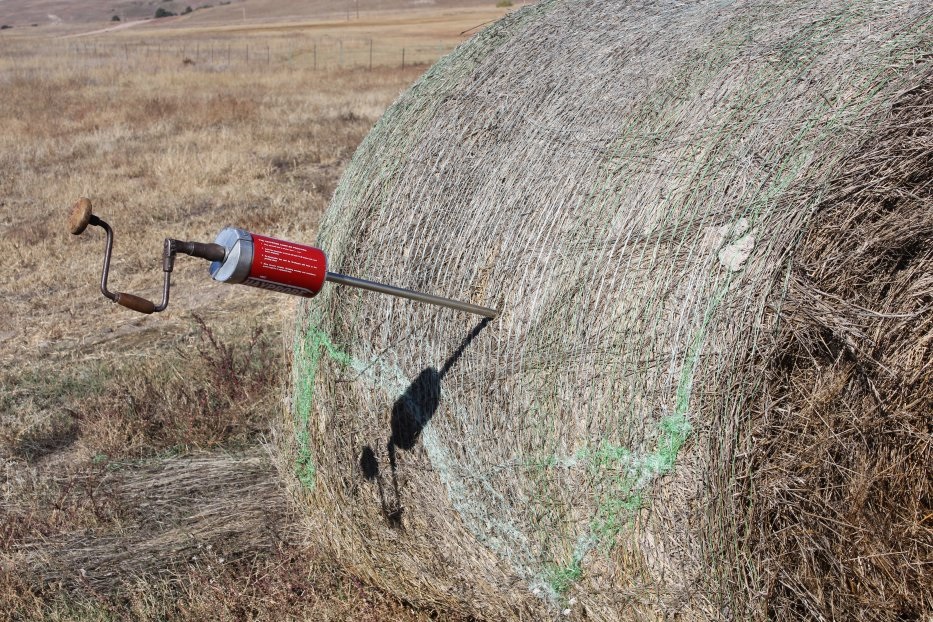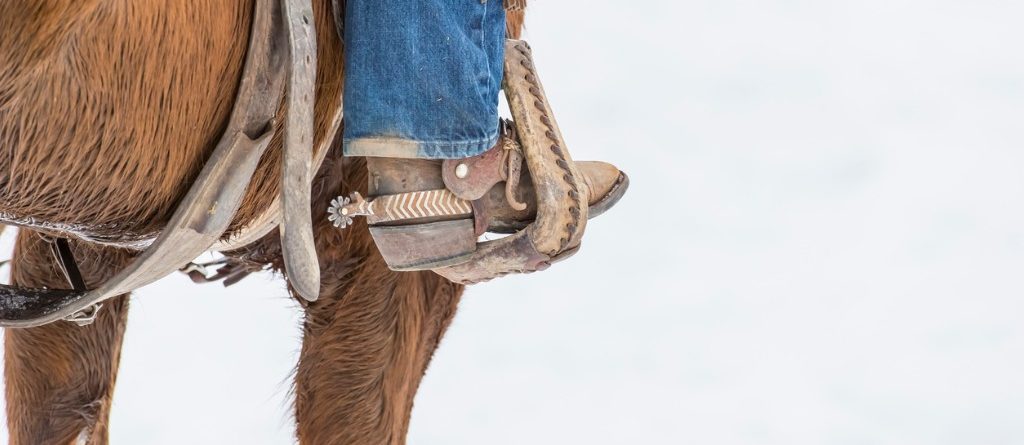Fall is here and the weather reminds us of the changing of the seasons. This is the time of year when many producers are hauling hay home for the winter as well as pricing and purchasing hay. There is a tremendous range in hay quality depending upon level of maturity, fertilization, growing conditions, harvest circumstances and storage methods. Accurately sampling and testing hay is the only way to get a real understanding of the nutritive value of feed. Using values from previous years or a “book value” can be costly since a producer may incorrectly develop a ration using values that aren’t representative.
Guidelines for sampling
When sampling hay, getting a representative sample is a critical first step. Samples must accurately represent the entire lot of hay. When obtaining a sample for analysis, it should be kept separate from other lots of hay. The UNL NebGuide “Sampling Feeds for Analyses” (PDF version, 655KB) states that a “lot” of hay should be harvested from the same field consisting of similar types of plants, cutting dates, maturity, variety, weed contamination, type of harvest equipment, curing methods and storage conditions. When these conditions differ, feed should be designated and sampled as a separate “lot”.
Hay samples should be taken using a hay probe or a core sampler. The hay probe should penetrate at least 12-18 inches into the bale and have an internal diameter of at least 3/8 of an inch. Using your hand to grab a sample will not consistently provide reliable results. Tips of hay probes should be kept sharp to cut through hay and prevent selective sampling. Avoid getting hay probes hot when using a drill to drive the probe into the bale, since friction from high speeds can heat the probe to a point where it damages the hay sample.
To get a representative hay sample from a “lot” of hay, select 15-20 bales in the lot. Knowing the total number of bales that are present can help identify a random method that should be used (such as sample every fourth bale) to obtain an accurate sample. Once all of the samples for a “lot” have been collected, the samples may need to be sub-sampled to get the feed down to a sample size that can be sent in for analysis. The UNL NebGuide “Sampling Feeds for Analyses” walks through a step-by-step process to do this. Being careful to ensure the sub-sample submitted is representative is important.
Once hay samples have been taken store in a plastic sealed bag in cool dry place until the sample is ready to be submitted. Samples that contain over 15% moisture should be frozen. Make sure to label the bag with your name, address, lot identification and feed type. Most commercial labs provide an information submittal form that allows producers to select a standard feed test for forages. Whenever possible, send samples into the lab early in the week to avoid having the samples sit over a weekend.
Analyze for moisture, protein and energy
Cattle feeds should be analyzed for moisture, protein and energy. Producers may also want to have forages tested for key minerals. Feed sample results are usually reported on an as-is and dry-matter basis.
When developing a ration for cattle or comparing feeds to one another, always utilize the nutrient analysis on a dry-matter basis. After formulating a ration on a dry-matter basis, the values can then be converted to an as-is basis using the moisture content of the feed to determine the actual amount of feed that should be fed to the cattle on an as-is basis.
Analyze forages for nitrates
In addition to moisture, protein and energy, annual forages harvested for hay such as foxtail millet, oats, sudan grass and sorghum-sudan hybrids should be analyzed for nitrates. These annual forages can accumulate high levels of nitrates under various growing conditions that can potentially reach toxic levels. The only way to know if high levels of nitrate accumulation have occurred is to test for it. See the UNL NebGuide “Nitrates in Livestock Feeding” (PDF version, 319KB) for additional information. For additional information on understanding the results from a hay analyses, please see the “Understanding a Feed Analysis” Learning Module on the UNL Beef website.
Conclusion
Accurately testing hay takes time and money. However, the value of this information is critical in accurately and cost-effectively formulating rations. Don’t let the small investment of time and money discourage you, it may be some of the best time and money you can invest in your operation.
Source: UNL Beef Institute of Agriculture and Natural Resources, Aaron Berger, Nebraska Extension Educator, October 2017
Photo: Troy Walz.








